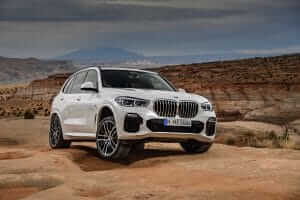If you’re in the market for a used car, you’ve probably come across the term “drivetrain.” But what does drivetrain mean exactly, and why is it important when choosing your next vehicle? Understanding the drivetrain—whether you’re looking at a sleek BMW 3 Series or a compact Ford Fiesta—is crucial for assessing performance, reliability, and maintenance requirements.
What Does Drivetrain Mean?
Simply put, the drivetrain is the system in a vehicle that transmits power from the engine to the wheels. It’s a combination of parts that ensure your car moves. Think of it as the bridge—the drivetrain takes the engine’s power and guides it where it needs to go so the wheels can spin and the car can move.
The term “drivetrain” can often get confused with “powertrain,” but they’re not the same. The powertrain includes every component responsible for creating and delivering power (like the engine), whereas the drivetrain doesn’t include the engine—its focus is solely on transferring that power.
Key components of a drivetrain include:
- Transmission – Changes the gears to adjust the car’s speed and torque.
- Driveshaft – Transfers torque from the transmission to the wheels.
- Axle and Differential – Helps the wheels rotate and manage turning.
For example, in a BMW X5, you’ll find a highly efficient drivetrain designed to handle tough terrains while maintaining smooth performance on the motorway.

Types of Drivetrains
When shopping for a used car, you’ll likely encounter four common types of drivetrains. Here’s what you need to know about each:
1. Front-Wheel Drive (FWD)
With FWD, the power goes to the front wheels, allowing them to both steer the car and drive it forward. Most vehicles, like the Volkswagen Golf or Vauxhall Corsa, use this type of drivetrain as it’s straightforward and economical.
Advantages:
- Lightweight and fuel-efficient.
- Lower manufacturing and maintenance costs.
- Performs well in mild weather conditions.
Disadvantages:
- Less suitable for off-roading or heavy snow.
- Tends to understeer when pushed to high speeds.
If you’re sticking to city driving and short commutes, a FWD drivetrain in models like the Toyota Yaris could be the perfect fit.
2. Rear-Wheel Drive (RWD)
With RWD, the power is sent to the rear wheels, leaving the fronts responsible for steering only. Cars like the Mercedes-Benz E-Class or the sporty Mazda MX-5 often boast this type.
Advantages:
- Better performance and handling at high speeds.
- Ideal for sports cars and trucks.
- Handles larger loads better.
Disadvantages:
- More expensive to manufacture and maintain.
- Relatively poor traction on wet or icy roads.
3. All-Wheel Drive (AWD)
AWD vehicles distribute power to all four wheels automatically. Cars like the Audi Q3 or Subaru Forester are often equipped with AWD to ensure better handling in rugged or slippery conditions.
Advantages:
- Great for off-road and all-weather conditions.
- Improved road grip and stability.
- Requires no driver input for power distribution.
Disadvantages:
- Higher fuel consumption.
- More complex, leading to greater maintenance costs.
If adventure is on your horizon, an AWD drivetrain SUV like a Land Rover Discovery might just be your next perfect companion.

4. Four-Wheel Drive (4WD)
Think 4WD is just another term for AWD? Not quite. With 4WD, you manually decide when to power all four wheels, often with a switch or lever. It’s common in vehicles like the Jeep Cherokee or Toyota RAV4.
Advantages:
- Excellent for extreme off-road conditions.
- Increased torque, making it ideal for towing.
Disadvantages:
- Less fuel-efficient compared to AWD or FWD.
- Requires manual control, which might not appeal to all drivers.
Plan to venture far off the beaten path? Then a 4WD vehicle is a no-brainer.

Drivetrain Meaning for Specific Vehicles
Model-specific drivetrain setups can be key selling points for some vehicles. For example, the BMW drivetrain is often associated with dynamic performance and precision engineering. Curious about a specific model like the BMW X3? Its AWD drivetrain, coupled with advanced technology, makes it a standout choice for versatile performance across terrains.
Meanwhile, cars like the Tesla Model 3 or Nissan Leaf don’t rely on traditional drivetrains, as their electric motors power the wheels directly.
Why Drivetrains Matter When Buying Used Cars
When exploring used cars, understanding the drivetrain is crucial for getting a car that matches your needs. Ask yourself:
- Do I need strong performance (look into RWD)?
- Will I drive in tough weather or rural areas (AWD or 4WD is a must)?
- Am I sticking to city commutes (FWD will suffice)?
A well-maintained drivetrain ensures a smoother, safer driving experience and impacts long-term reliability. Need help inspecting components in a used car? Our buying checklist lays out everything you need to check before signing the dotted line.
Final Thoughts on Choosing the Right Drivetrain
Understanding what a drivetrain is can make all the difference when buying your next used car. By identifying your driving habits, environment, and budget, you’ll be equipped to choose a drivetrain that’s both practical and cost-efficient.
Still weighing your options? Explore more resources, like tips on choosing the right car or the best used SUVs, to guide your decision-making and find the right fit for your lifestyle.
And don’t forget—keeping your drivetrain in top condition is just one key to a car’s longevity. Check out our car maintenance guide for expert insights on maintaining your vehicle.


